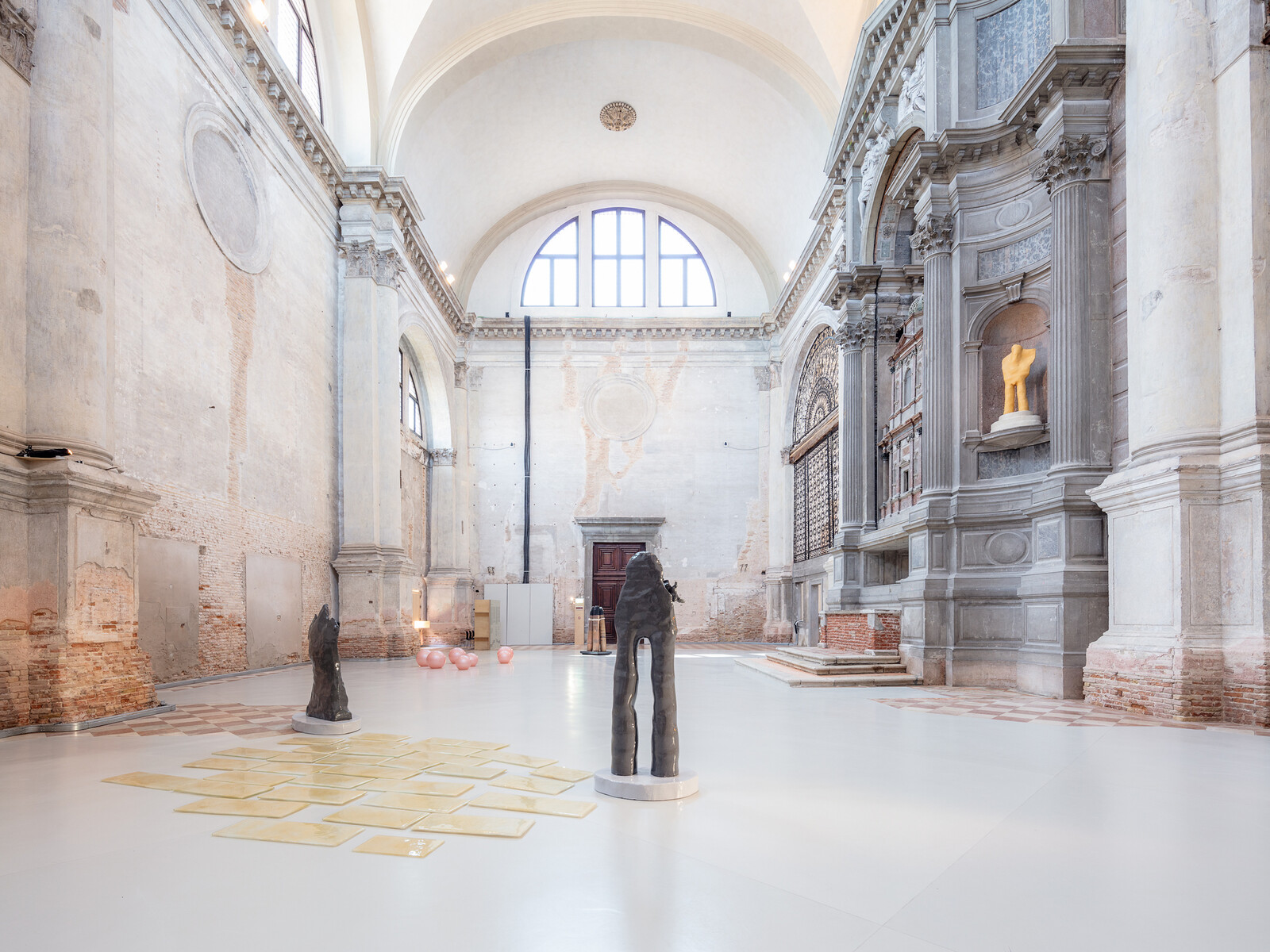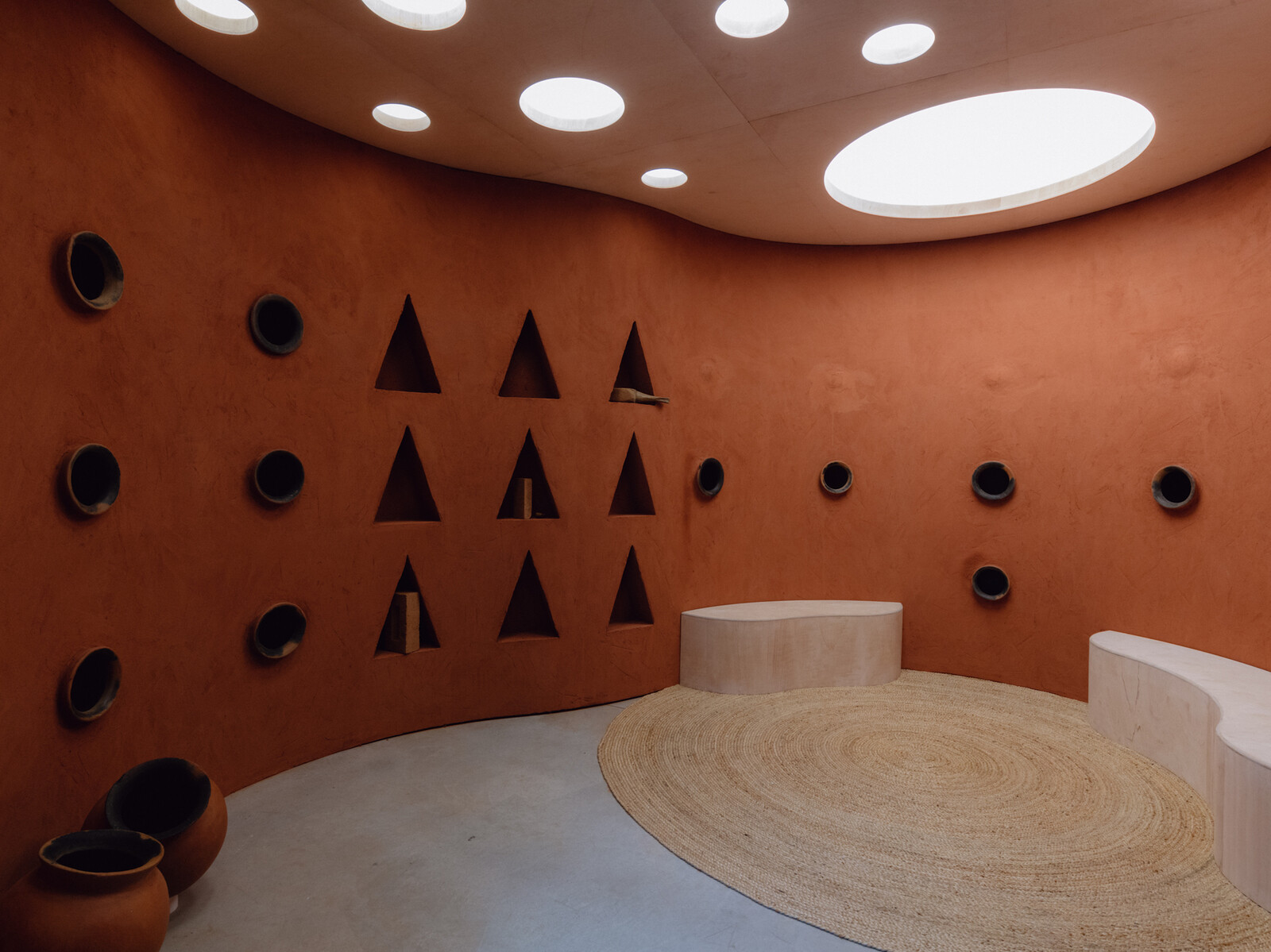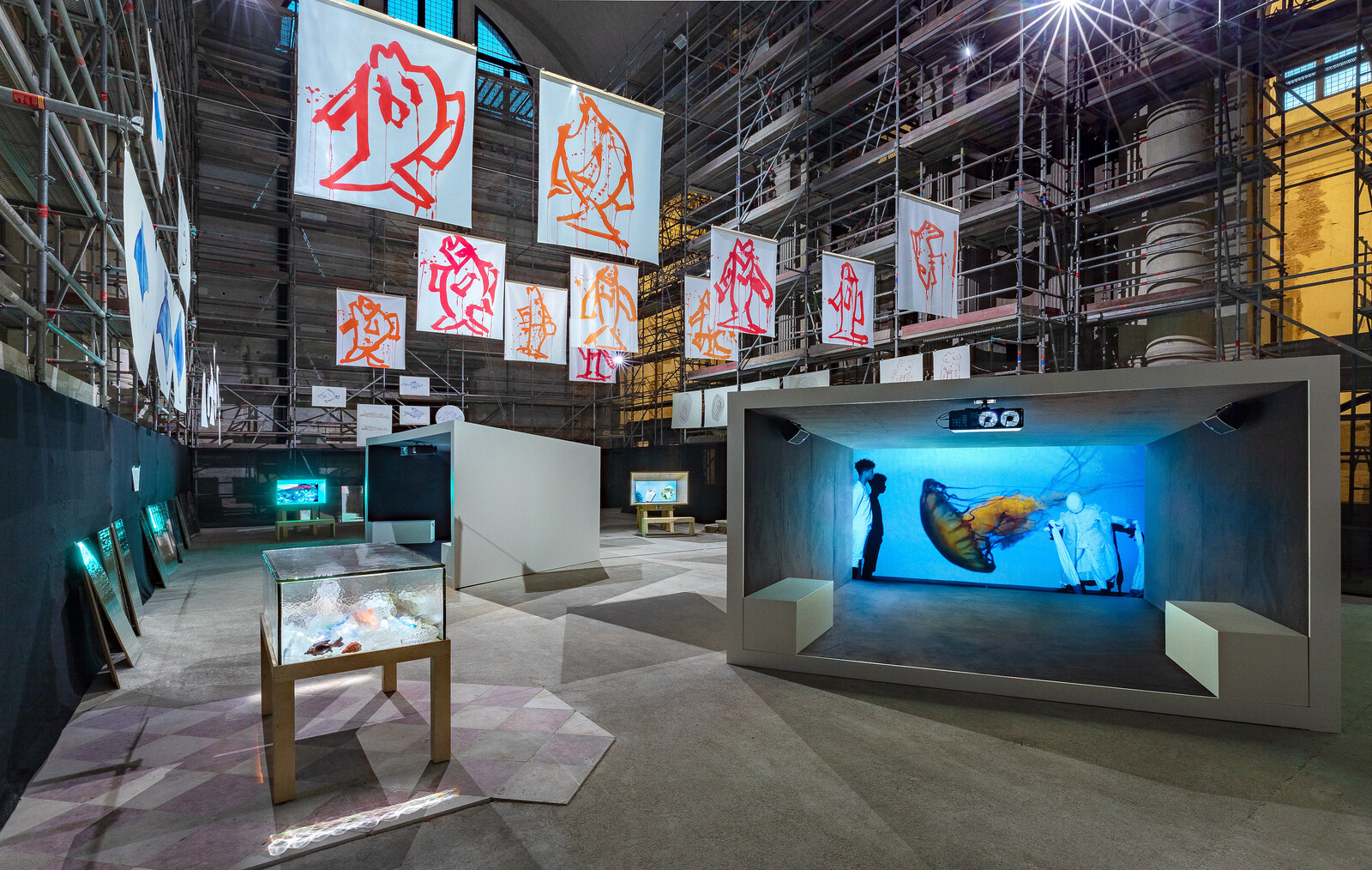Categories
Subjects
Authors
Artists
Venues
Locations
Calendar
Filter
Done
July 26, 2023 – Review
“Everybody Talks About the Weather” and “Thus waves come in pairs”
Laura McLean-Ferris

One of the most remarkable things about living through a permacrisis is how much seems to go on as normal. Art exhibitions, for example, continue to get organized amid deranging heat, the lurid smoke of forest fires, and the wet wreckage of floods. In Venice, the precarious lagoon city now heavily reliant on a high-tech flood barrier system, two shows are currently on view that propose methods for curating art in this atmosphere of environmental collapse and change.
Weather as metaphor, weather as context, weather as catalyst and catastrophe. There are a lot of exhibition-making strategies being tested in Dieter Roelstraete’s rangy “Everybody Talks About the Weather” at Fondazione Prada, but the show bears some relationship to the “report.” An LED screen with a grid of television weather forecasts from around the world is installed in the foyer, where a collection of glossy professionals with blow-dried hair gesture in front of colorful maps. This motif—newsy, mediatic, even a little silly—is echoed in the exhibition’s information panels, which resemble newspaper front pages with headlines, data, and “stories” about the artworks on show. This is the third in a series of major exhibitions across Prada’s venues that have marked a turn towards …
May 24, 2023 – Review
18th Venice Architecture Biennale, “The Laboratory of the Future”
George Kafka

In a recent interview with the New York Times, Norman Foster questioned why “we shouldn’t be converting seawater into jet fuel and decarbonizing the ocean at the same time.” Meanwhile, the 10,200sq mile Neom mega-project planned for the Saudi Arabian desert comes with claims of a “new benchmark for combining prosperity, liveability and environmental preservation.” As the architecture profession contends with the ingrained relationship between climate emergencies and built environments, both statements exemplify a tendency towards techno-solutionism in vocal sections of the industry—and betray an approach to design that overlooks material extraction and environmental destruction to justify extravagant capitalist projects behind weak masks of sustainability.
For all its challenges—the unmanageable volume of content, the density of text, the opacity of curatorial approaches—the 18th edition of the Venice Architecture Biennale offers a firm and timely challenge to this trend. Typically understood as a global state of the union for the profession and broader spatial practices, this edition (titled “The Laboratory of the Future” and curated by Ghanaian-Scottish architect and academic Lesley Lokko) is largely unflinching and rigorous in its selection of projects which reject techno-solutionist sustainability, opting instead for a showcase of architecture for “decolonization and decarbonization.”
These themes run through …
June 10, 2022 – Review
ORTA’s “LAI-PI-CHU-PLEE-LAPA Centre for the New Genius”
Inga Lāce

Organized by the transdisciplinary ORTA collective and based on the writings of Kazakhstani artist, writer, and inventor Sergey Kalmykov (1891–1967), the Kazakhstan Pavilion at this year’s Venice Biennale comprises immersive scenography made from the simplest materials. When I visited during the opening days, grayish wrapping paper enveloped the space from floor to ceiling, providing a background to printouts and props covered in aluminum foil and activated by participatory performances that the collective call “spectacular experiments.” This is the first year that Kazakhstan has participated in the Venice Biennale on its own, and the same goes for Uzbekistan and the Kyrgyz Republic: since 2005, these countries have shown as part of the Central Asian Pavilion.
Ten days before the opening of the biennale, ORTA realized that the long-planned delivery of artworks and materials from Kazakhstan would not arrive in time. The war in Ukraine meant that trucks that would usually cross Russia and Belarus—including those from Kazakhstan—were being rerouted through Georgia and Azerbaijan. This not only rendered visible the often-hidden logistical and financial efforts that organizers have to go through, pointing to the extreme inequality at the very foundation of the national pavilion format, but also made the pavilion a makeshift …
September 27, 2019 – Review
Joan Jonas’s “Moving Off the Land II”
Barbara Casavecchia

In one of my earliest memories, I’m swimming alone in fins and goggles across a bay in the Adriatic Sea. Everything is illuminated: emerald seaweeds, milky pink actinias, chromed silver fish, and my legs shining like a mermaid’s tail. Which is magic: on terra firma, ichthyosis (from ichthys, Ancient Greek for fish) makes my skin scaly, so that, as etymology suggests and dermatology recommends, salt water is my natural element. Bodies and cells know best. As Joan Jonas likes to point out: “somewhere in our unconscious we remember that we come from the sea. It’s not a memory; it’s a feeling; it’s in our DNA. I think that’s where all these stories come from and our desire to go back to the sea, our desire to swim under water, which I love to do.”
In her multimedia installation Moving Off the Land II (2019), exhibited at Ocean Space in Venice and curated by Stefanie Hessler, we see Jonas swimming in a dress (red and polka-dotted, or dark and transparent) with a cloud of silver hair snaking gently around her head. In these videos, shot in Jamaica by filmmaker Cynthia Beatt, she looks like a luminous apparition, an aquatic creature whose …
June 14, 2016 – Review
15th Venice Architecture Biennale, “Reporting from the Front"
Nick Currie

During the first decade of neoliberalism, not long after Live Aid, Sandy Nairne made a series of six films called “State of the Art” for the UK’s Channel 4. They provide a fascinating glimpse into a 1980s contemporary art world both condemning and colluding with international capital. In the fifth film we see once-radical artists like Terry Atkinson recanting their former “left-wing heavy booting” in the name of a new “complexity,” and in the sixth we visit the 1986 Sydney Biennale, where 1980s politicians in 1980s suits are making a big deal of the show’s inclusiveness—somewhat to the consternation of Aboriginal artist Michael Nelson Tjakamarra, who feels that a decontextualizing tokenism may be at work.
Thirty years have passed, but very little has changed. On the one hand, art fairs like the Basel franchise operate like a greedy id, offering the super-rich primal visual pleasure and investment opportunities. On the other (oppositional or complementary according to your perspective), biennials stand as a sort of guilty superego, with loftily humanist curators—often from poorer nations—asking us to consider the plight of refugees, immigrants, and the poor (the victims, one might say, of the very people the big art fairs are aimed at). The …
